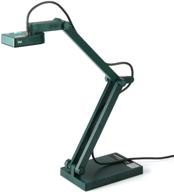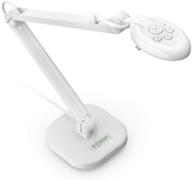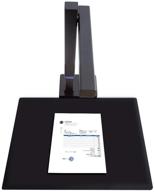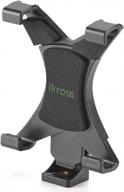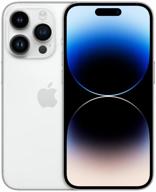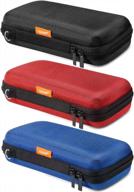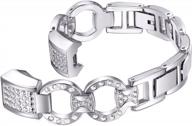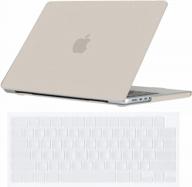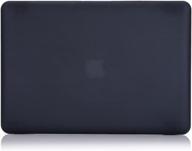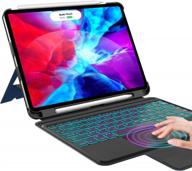Another interesting products


10 Review

Choosing the Right Projector for Your Needs
With so many projector options on the market, it can be tricky to determine which model is right for your needs and environment. This guide will walk you through the key factors to consider when shopping for a projector.
Projection Distance
One of the first things to think about is how far away the projector will be placed from the screen or projection surface. Projectors have a certain throw ratio that determines how close they need to be positioned. Here are some typical throw ratios to keep in mind:
- Short throw - 0.5 to 0.8, for small rooms and rear projection
- Standard throw - 1.0 to 1.3, for average-sized rooms
- Long throw - 1.3 to 2.5, for larger venues with distance from screen
Resolution
Projector resolution is measured in pixels, either in a rectangular shape like 1024x768 or total pixel count like 1 million pixels. Common resolutions include:
| Resolution | Description |
|---|---|
| SVGA | 800 x 600 pixels, good for simple presentations |
| XGA | 1024 x 768 pixels, the minimum for detailed presentations |
| 1080p | 1920 x 1080 pixels, high-definition projection |
Brightness
Projector brightness is measured in lumens. A higher lumen rating means a brighter image. Consider these brightness guidelines:
- 1000+ lumens for business presentations in a bright room
- 3000+ lumens for viewing video in a living room
- 5000+ lumens for large venues like auditoriums
Projection Technology
Modern projectors use one of three projection technologies:
- LCD - Offers sharp, accurate color reproduction and is very lightweight.
- DLP - Provides excellent contrast levels, suited for video viewing in dark rooms.
- LCOS - Delivers outstanding color saturation, ideal for high-end home theater.
Consider which technology aligns best with your planned usage.
Connectivity
Determine what sources you will connect to the projector like DVD players, gaming consoles or laptops. Then ensure the projector supports those connections, such as:
- HDMI
- VGA
- Composite video
- USB
Also check for audio connectivity like speaker outputs or a headphone jack if sound is needed.
Portability
If you want to easily move the projector between locations, look for a lightweight model under 5 pounds. Battery-powered portable projectors are also available for true on-the-go use.
Carefully considering these factors will help you select the ideal projector model for your specific needs and setup.
Projector Types and Key Features
Projectors come in a variety of types, each with their own strengths and ideal usage scenarios. Here is an overview of the most common projector types and their key features.
DLP (Digital Light Processing)
DLP projectors use a chip with tiny mirrors to reflect light through a color wheel. Key features include:
- Excellent contrast ratios, producing deep blacks
- Very sharp resolution and detail
- Fast response times, good for gaming and video
- More prone to "rainbow effect" from the color wheel
- Typically less expensive than other technologies
Best for: Home theater rooms, gaming setups, business presentations
LCD (Liquid Crystal Display)
LCD projectors pass light through panels of liquid crystals. Key features include:
- Bright, vibrant colors and sharp text
- Lightweight and portable designs
- No rainbow effect
- Not as good black levels as DLP
- Lower contrast ratios than DLP
Best for: Business presentations, educational use, daytime home theater
Similar products
LCOS (Liquid Crystal on Silicon)
LCOS uses a chip covered in liquid crystals reflecting light. Key features include:
- Excellent color accuracy and saturation
- High contrast ratios approaching DLP
- Expensive compared to other technologies
- Large, heavy designs, not very portable
Best for: High-end home theater, commercial cinema
LED Projectors
LED projectors use LEDs instead of lasers or lamps as a light source. Key features include:
- Do not need lamp replacements
- Consume less power than traditional lamp models
- Typically only used for small, battery-powered portable projectors
- Lower brightness levels than lamp projectors
Best for: Mobile presentations, outdoor movies, RVs
Laser Projectors
Laser projectors use laser diodes to generate light. Key features include:
- Extremely high brightness for large venues
- 20,000+ hours of use without lamp swaps
- Very expensive, costing tens of thousands of dollars
- Require careful calibration
- Can be hazardous if safety protocols not followed
Best for: Large auditoriums, concerts, theaters
Considering the environment you want to use your projector in and the types of content you'll display will help determine which technology is the best fit.
Portable vs Installed Projectors
When choosing a projector for your needs, one of the first decisions is whether you need a portable, easily moved model or a permanently installed fixture. Here are some key differences between portable and installed projectors.
Portable Projectors
Portable projectors are designed to be moved from room to room or taken offsite for presentations. Features include:
- Compact and lightweight housing, under 10 pounds
- Carrying case or bag included for transport
- Quick and easy setup, some have instant on/off
- Lower price points, often under $500
- Lower resolution and brightness due to size constraints
- Shorter lamp life spans, sometimes under 3,000 hours
Best for: Business travelers, classroom presentations, impromptu movie nights
Installed Projectors
Installed projectors are permanently mounted to a ceiling or wall structure. Features include:
- Heavy-duty metal housing designed for fixed mounting
- Higher resolution options, up to 4K and higher
- Brightness over 5,000 lumens for large rooms
- Advanced connectivity like HDMI inputs
- Higher price points, often over $1,000
- Require professional installation and calibration
Best for: Conference rooms, auditoriums, theaters
Consider whether you need the flexibility of portability or the power of an installed fixture based on your intended use case.
Projector Resolution and Brightness
Two key specifications to consider when selecting a projector are resolution and brightness. Matching these to your needs and room environment is important for a satisfactory viewing experience.
Resolution
Projector resolution determines the level of fine detail and image sharpness. Some common resolutions are:
- SVGA (800x600) - The minimum required for presentations with basic text and graphics.
- 720p (1280x720) - Provides HD quality suitable for home use.
- 1080p (1920x1080) - Delivers full high definition viewing for the sharpest image.
- 4K (3840x2160) - Offers ultra fine 4K resolution for the most detail, ideal for large screens.
For example, to see facial expressions clearly in a video conference, at least 720p would be recommended. Whereas detailed engineering schematics would require a higher resolution like WUXGA (1920x1200).
Brightness
Projector brightness is measured in lumens. A general guideline is:
- 1000+ lumens for dark office conference rooms
- 3000+ lumens for well lit classrooms or living rooms
- 5000+ lumens for large spaces like auditoriums
Usage in a basement home theater with controlled lighting may only need 2000 lumens. But projecting in a bright retail store would require 5000+ lumens for clear daytime visibility.
Try to match the resolution and brightness to your specific environment and projection needs for the best experience.
What is the use of Amazon Prime for a regular buyer of "Video Projectors & Accessories"?
For those who frequently purchase video projectors, screens, cables, mounts and other related accessories, an Amazon Prime membership can provide significant value and convenience.
Free Two-Day Shipping
One of the biggest perks of Amazon Prime is free two-day shipping on most items. This allows you to quickly get projectors and accessories delivered right to your door at no extra cost. It's extremely helpful for last-minute purchases before a big presentation at work or projector movie night at home.
Access to Exclusive Deals
Amazon Prime members get 30-minute early access to Lightning Deals and Prime-exclusive discounts. This gives you a head start on limited time projector and accessory sales so you can snag the best deals before non-Prime customers.
Prime Video
An Amazon Prime membership grants access to thousands of movies, TV shows, and other video content via Prime Video. It's a nice complement to your projector purchase, providing tons of media to display in large-screen format.
Prime Music
You also get a selection of free music to stream through Prime Music. This gives you an audio source to play over speakers connected to your projector for soundtrack accompaniment.
Whole Home Benefits
For multi-projector households, Prime offers perks like unlimited photo storage and multi-user profiles so the whole family can take advantage. You can also share Prime benefits with another household for no extra charge.
Overall, the fast free shipping and exclusive access to deals make Amazon Prime a very useful subscription for frequent buyers of projectors and related gear.
"Top 6 Video Projectors & Accessories For Your Home Theater"
Top 6 Video Projectors & Accessories for Your Home Theater:
- Epson Home Cinema 5050UB 4K PRO-UHD Projector
- Optoma UHD60 True 4K UHD Projector
- BenQ HT3550 4K Home Theater Projector
- Anker Nebula Capsule Max Portable Projector
- VANKYO Leisure 3W Mini Projector
- AmazonBasics High-Speed 4K HDMI Cable with Ethernet
These projectors and accessories are perfect for creating an immersive home theater experience. From high-quality 4K resolution to portable options, there is something for everyone. Don't settle for a mediocre viewing experience - upgrade your home theater with these top picks.
Top products in 📽️ Video Projectors & Accessories
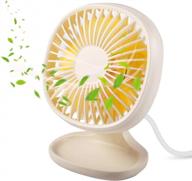

29 Review

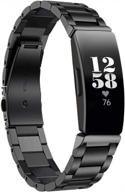

38 Review

What Are The Differences Between The Top 6 Video Projectors??
The top 6 video projectors and accessories differ in terms of their features, specifications, and intended use. Here are some of the differences between them:
- Epson Home Cinema 5050UB 4K PRO-UHD Projector: This projector is designed for home theater use and offers high-quality 4K resolution, HDR support, and a wide color gamut. It also has a high contrast ratio and brightness, making it suitable for use in dark rooms.
- Optoma UHD60 True 4K UHD Projector: This projector is also designed for home theater use and offers true 4K resolution, HDR support, and a high contrast ratio. It is also relatively affordable compared to other 4K projectors.
- BenQ HT3550 4K Home Theater Projector: This projector is designed for home theater use and offers 4K resolution, HDR support, and a wide color gamut. It also has a high contrast ratio and brightness, making it suitable for use in dark rooms.
- Anker Nebula Capsule Max Portable Projector: This portable projector is designed for use on the go and offers a compact size, built-in speakers, and a long battery life. It is suitable for use in small rooms and for casual viewing.
- VANKYO Leisure 3W Mini Projector: This mini projector is designed for home use and offers a compact size, built-in speakers, and a low price point. It is suitable for use in small rooms and for casual viewing.
- AmazonBasics High-Speed 4K HDMI Cable with Ethernet: This HDMI cable is designed to support 4K resolution and is suitable for use with a variety of video projectors and other devices. It is also relatively affordable compared to other HDMI cables.





